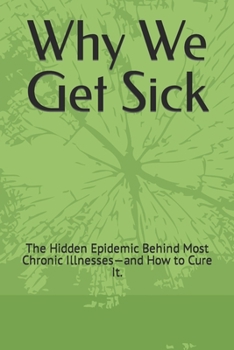Why We Get Sick: The Hidden Epidemic Behind Most Chronic Illnesses—and How to Cure It.
When the cells in your muscles, fat, and liver do not respond to insulin as they should, you develop insulin resistance, also known as decreased insulin sensitivity. Your pancreas secretes the hormone insulin, which is necessary for life and regulates blood glucose (sugar) levels.. Acute or chronic insulin resistance is possible, and it is occasionally treatable.
The steps of normal insulin action are as follows:
Your body turns food into glucose (sugar), which serves as the body's main source of energy..
Your blood is exposed to glucose, which instructs your pancreas to release insulin.
Your muscle, fat, and liver cells can use the glucose in your blood for energy or store it for later use with the help of insulin. Your bloodstream's decreased glucose levels tell your pancreas to stop making insulin as soon as glucose enters your cells.
Your muscle, fat, and liver cells may react improperly to insulin for a variety of reasons, making it difficult for them to adequately absorb or retain glucose from your blood. It's called insulin resistance. Your pancreas produces more insulin as a result in an effort to combat your rising blood glucose levels. It's known as hyperinsulinemia.
Your blood sugar levels will remain within a healthy range as long as your pancreas can produce enough insulin to override your cells' subpar response to insulin. Hyperglycemia, which results from your cells' excessive insulin resistance, causes raised blood glucose levels (hyperglycemia), which eventually cause prediabetes and Type 2 diabetes.
Insulin resistance is linked to a number of additional illnesses outside Type 2 diabetes, such as:
Obesity.
the cardiovascular system.
liver fatty liver without alcohol.
metabolic disorder
ovarian polycyst syndrome (PCOS
The steps of normal insulin action are as follows:
Your body turns food into glucose (sugar), which serves as the body's main source of energy..
Your blood is exposed to glucose, which instructs your pancreas to release insulin.
Your muscle, fat, and liver cells can use the glucose in your blood for energy or store it for later use with the help of insulin. Your bloodstream's decreased glucose levels tell your pancreas to stop making insulin as soon as glucose enters your cells.
Your muscle, fat, and liver cells may react improperly to insulin for a variety of reasons, making it difficult for them to adequately absorb or retain glucose from your blood. It's called insulin resistance. Your pancreas produces more insulin as a result in an effort to combat your rising blood glucose levels. It's known as hyperinsulinemia.
Your blood sugar levels will remain within a healthy range as long as your pancreas can produce enough insulin to override your cells' subpar response to insulin. Hyperglycemia, which results from your cells' excessive insulin resistance, causes raised blood glucose levels (hyperglycemia), which eventually cause prediabetes and Type 2 diabetes.
Insulin resistance is linked to a number of additional illnesses outside Type 2 diabetes, such as:
Obesity.
the cardiovascular system.
liver fatty liver without alcohol.
metabolic disorder
ovarian polycyst syndrome (PCOS
Format:Paperback
Language:English
ISBN:B0BF3G81TH
ISBN13:9798352547779
Release Date:September 2022
Publisher:Independently Published
Length:32 Pages
Weight:0.13 lbs.
Dimensions:0.1" x 6.0" x 9.0"
Customer Reviews
0 rating





